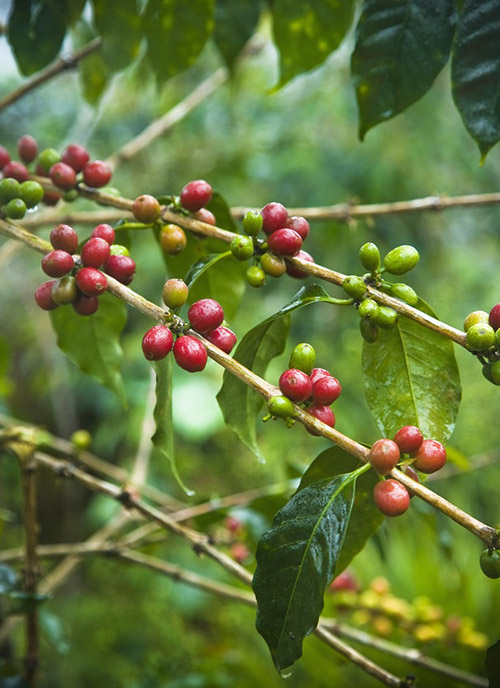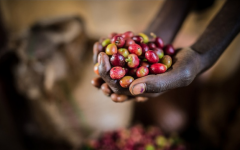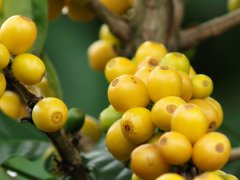Ethiopia washed Sidama G1 Miyu imported micro-batch fine coffee beans story allusions

For professional baristas, please follow the coffee workshop (Wechat official account cafe_style)
The Oromia region is one of the sources of coffee in the world, and its native Oromo is the first person in the world to use coffee as a food, dating back to the 5th century AD. Oromia is located at about 3-15 degrees north latitude and 33-40 degrees longitude. The region is famous for its primordial plant species and species diversity. This is where coffee was born. For the local Oromo people, coffee is their drink, their food, an important part of their trade, a local "stimulant" and an important tool for safeguarding peace.
Honeyed words of the hand. 15g powder, medium fineness grinding (small Fuji ghost tooth cutter 3.5grinding), v60 filter cup, 91mi 93 degrees water temperature, first water injection 30g water, carry on steaming for 27 seconds, injection to 105g water cut off, wait for powder bed water to half, then water injection, slow water injection until 225g water volume, no water powder ratio at 1:15, extraction time at 2:00
Producing area: Oromia, Ethiopia
Varieties: Ethiopian native species
Haiba: 2000
Treatment: washing
Name: coffee factory address: Guangzhou Yuexiu Guan District Baoqian Street 10 Qianjie coffee manufacturers contact information: 38364473 shelf life: 90 net content: 227g packaging: bulk coffee beans ripe degree: whether coffee beans contain sugar: sugar-free origin: Ethiopia roasting degree: light roasting
Various forms of coffee cultivation can be found in Ethiopia: everything from wild coffee forests and semi-developed land to traditionally operated plots to modern plantations. About 50% of the coffee is grown more than 1500 meters above sea level. According to the above four different modes of production, Ethiopian coffee can be divided into nine major coffee producing areas, including five boutique coffee areas: Sidamo, Yegashefi, Harald, Lim and Lekampu. and four general commercial bean producing areas: Gemma, Irugbo, Tibby and Bekaa. The sun or water washing methods are used in each district, and different treatment methods also affect the flavor. At present, the sun method accounts for about 80%, and water washing accounts for about 20%.
In this micro-batch coffee, 100% Red Cherry was selected by hand, then the peel and pulp was removed by Agared equipment, and then the coffee beans with pectin were fermented in a fermentation tank for 36 hours, then Souking for 4 hours, dried in a drying bed with a size of 30 to 1.8 meters, and then shelled. After manual screening, they were packed in GrainPro bags and covered with gunny bags.
Flavor description:
Obvious wild ginger and bergamot, with notes of blackcurrant, sweet aftertaste of raisins, and overall flavor reminiscent of Earl black tea
Important Notice :
前街咖啡 FrontStreet Coffee has moved to new addredd:
FrontStreet Coffee Address: 315,Donghua East Road,GuangZhou
Tel:020 38364473
- Prev

Suggestion on hand-washing parameters of imported Micro-batch Fine Coffee beans in Ethiopia washing Sidamo G1 Honey language
For the exchange of professional baristas, please pay attention to the honeyed words made by the hands of the coffee workshop (Wechat official account cafe_style). 15g powder, medium fineness grinding (small Fuji ghost tooth cutter 3.5grinding), v60 filter cup, 9193 degrees water temperature, 30g water injection for the first time, steaming for 27 seconds, water injection to 105g water cut off, wait for the water volume of powder bed to be reduced to half and then water injection, slow water injection until 225g water, do not use water at the end.
- Next

Suggestion on hand-washing parameters of San Pagoda Yellow Bourbon washed Fine Coffee beans in Santa Rita Manor, El Salvador
For the exchange of professional baristas, please follow the Santa Rita made by hand in the coffee workshop (Wechat official account cafe_style). 15g powder, medium grinding (small Fuji ghost tooth cutter 4 grinding), v60 filter cup, 88-89 degrees water temperature, 30g water injection for the first time, steaming for 27 seconds, water injection to 105g water cut off, wait for the powder bed water to drop to half and then water injection, slow water injection until 225g water, the end section is not
Related
- Detailed explanation of Jadeite planting Land in Panamanian Jadeite Manor introduction to the grading system of Jadeite competitive bidding, Red bid, Green bid and Rose Summer
- Story of Coffee planting in Brenka region of Costa Rica Stonehenge Manor anaerobic heavy honey treatment of flavor mouth
- What's on the barrel of Blue Mountain Coffee beans?
- Can American coffee also pull flowers? How to use hot American style to pull out a good-looking pattern?
- Can you make a cold extract with coffee beans? What is the right proportion for cold-extracted coffee formula?
- Indonesian PWN Gold Mandrine Coffee Origin Features Flavor How to Chong? Mandolin coffee is American.
- A brief introduction to the flavor characteristics of Brazilian yellow bourbon coffee beans
- What is the effect of different water quality on the flavor of cold-extracted coffee? What kind of water is best for brewing coffee?
- Why do you think of Rose Summer whenever you mention Panamanian coffee?
- Introduction to the characteristics of authentic blue mountain coffee bean producing areas? What is the CIB Coffee Authority in Jamaica?

